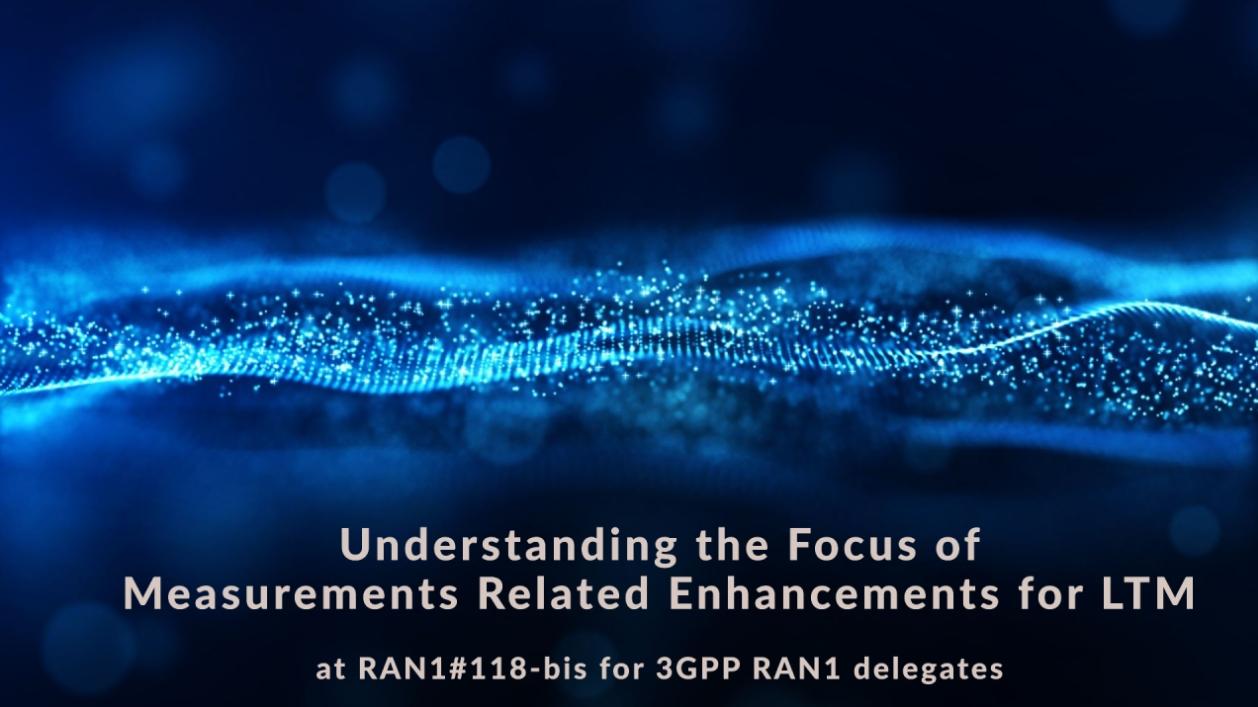Background
During the setting of cellular standards in Release 19, the work item NR Mobility Enhancements Phase 4 (NR_Mob_Ph4; refer to RP-241515 for the detailed scope of the WI) aims to address limitations introduced in Rel-18 by expanding LTM capabilities, supporting inter-CU operations, and enhancing L1 measurement capabilities. These enhancements ensure smoother mobility and efficient measurement handling in NR systems.
In agenda item 9.9.1 – Measurements Related Enhancements for LTM (Layer 1/Layer 2 Triggered Mobility) at the previous RAN1#118 meeting, several important agreements were reached in R1-2407445, including:
- Support for L1-RSRP measurement based on CSI-RS, providing a more robust framework for mobility.
- Adoption of MAC CE for event-triggered reporting, with further studies on the potential use of UCI.
- Explicit configuration of CSI-RS resources for candidate cells to enhance L1 measurement accuracy.
These agreements set the foundation for the upcoming meeting, where further progress will be made to address remaining technical challenges and define standards for LTM enhancements.
Overview of Proposals for RAN1#118-bis
Before attending the RAN1#118-bis meeting, RAN1 delegates must review and evaluate the proposals in TDocs submitted to 3GPP. Specifically, in agenda item 9.9.1 – Measurements Related Enhancements for LTM, 285 proposals across 25 TDocs contributed by 25 sources aim to shape future standards for LTM development in NR systems. Below is a closer look at the proposals shaping future LTM enhancements.
Key Topics

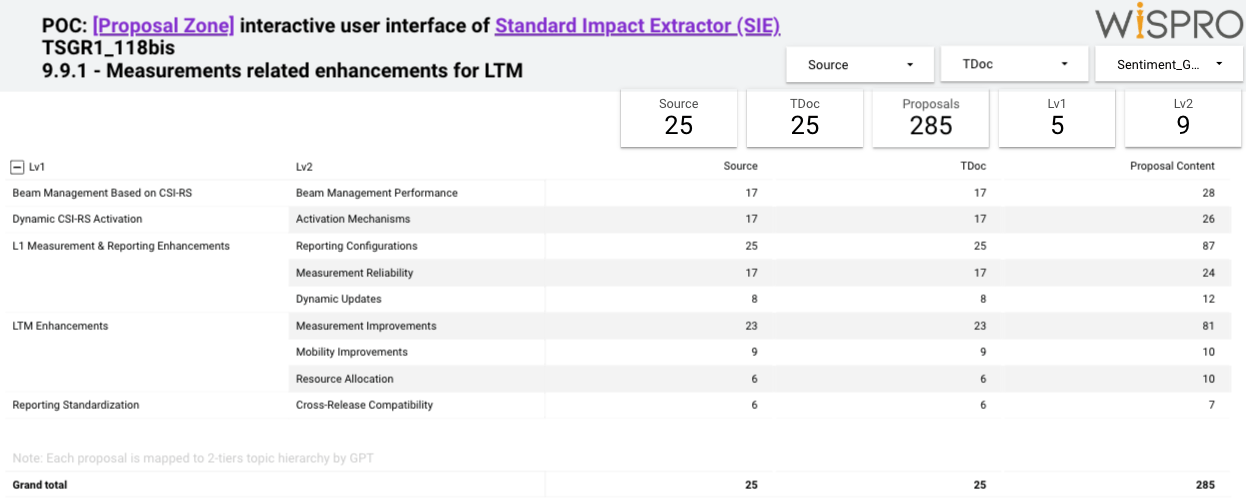
- 123 proposals (43%) on L1 Measurement & Reporting Enhancements : These focus on improving reporting configurations, measurement reliability, and dynamic updates. Accurate and efficient L1 measurements are critical to maintaining network performance.
- 101 proposals (35%) on LTM Enhancements : These target improvements in mobility processes and resource allocation, ensuring that LTM can effectively handle complex mobility scenarios.
- 61 proposals on Beam Management Based on CSI-RS, Dynamic CSI-RS Activation, and Reporting Standardization.
Notable Signals
- 25 sources contributed proposals: Two sources (Nokia, Huawei/HiSilicon) contributed more than 20 proposals each.
- The remaining 23 sources averaged 10.6 proposals each.
Different Focus Areas
- Nokia’s 21 proposals in R1-2408722 include:10 on “L1 Measurement & Reporting Enhancements”4 on “LTM Enhancements”3 each on “Beam Management Based on CSI-RS” and “Dynamic CSI-RS Activation”1 on “Reporting Standardization”

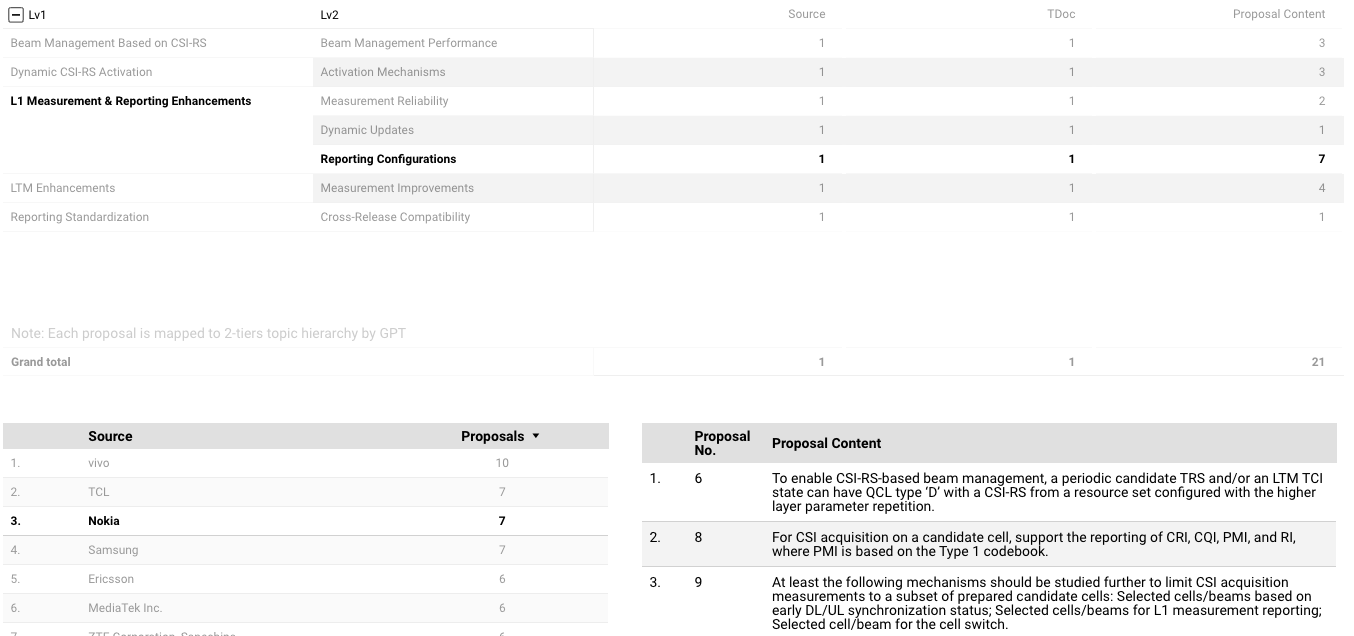
- Huawei and HiSilicon’s 20 proposals in R1-2407658 focus on:”LTM Enhancements” (14 proposals)2 each on “L1 Measurement and Reporting Enhancements”, “Beam Management Based on CSI-RS,” and “Dynamic CSI-RS Activation”

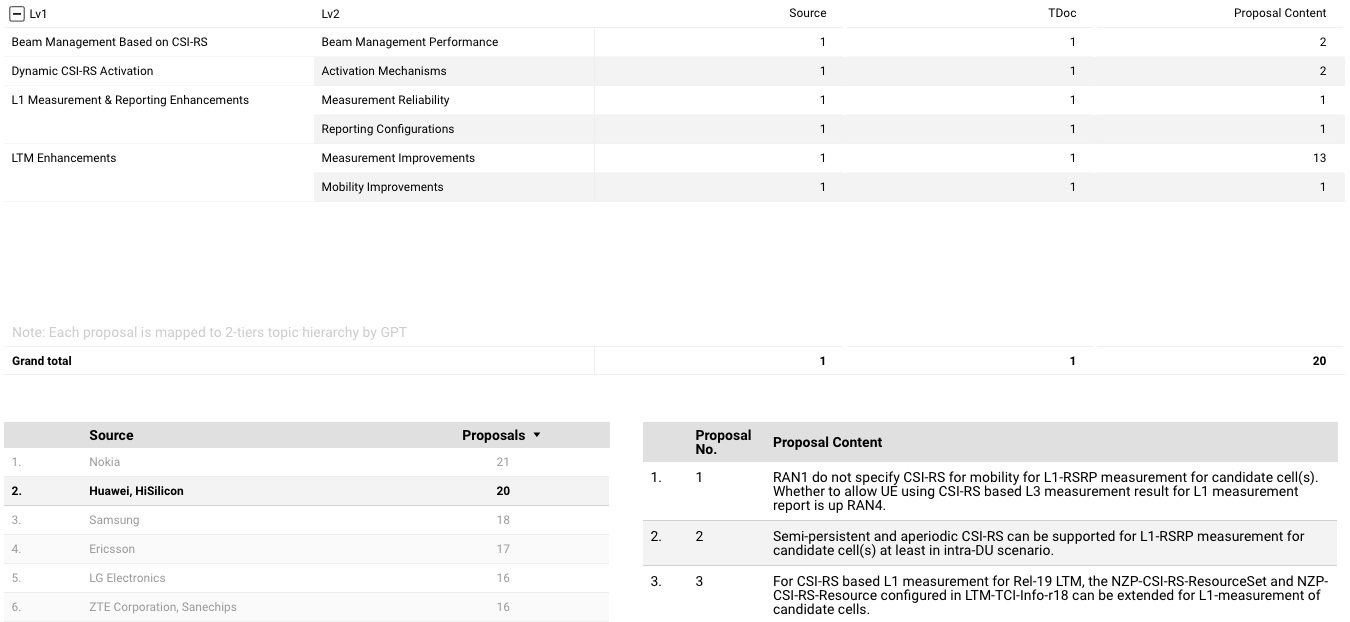
By understanding these insights, RAN1 delegates can prioritize key discussion areas, anticipate the meeting’s direction, and prepare effectively.
The Workload Challenge
The sheer volume of proposals—285 in total—presents a significant challenge for RAN1 delegates and feature leads. Each proposal requires careful evaluation, and the workload can be daunting with limited time before the meeting. However, this workload is crucial to ensuring the set standards are practical and forward-thinking.
These challenges highlight the need for effective tools and data insights to streamline the proposal review and decision-making process and help delegates set clear and consistent standards.
Time to Change
To help RAN1 delegates navigate these complexities, we introduce Proposal Zone – an intuitive tool designed to simplify proposal analysis and enhance decision-making efficiency. Proposal Zone provides advanced GPT-powered analysis, offering tags, topic summaries, and sentiment insights for each proposal. With this tool, delegates can:
- Quickly access relevant proposals by agenda item.
- Gain a comprehensive overview of key topics, trends, and sentiment.
- Evaluate proposals more effectively, identifying potential allies or competitors.

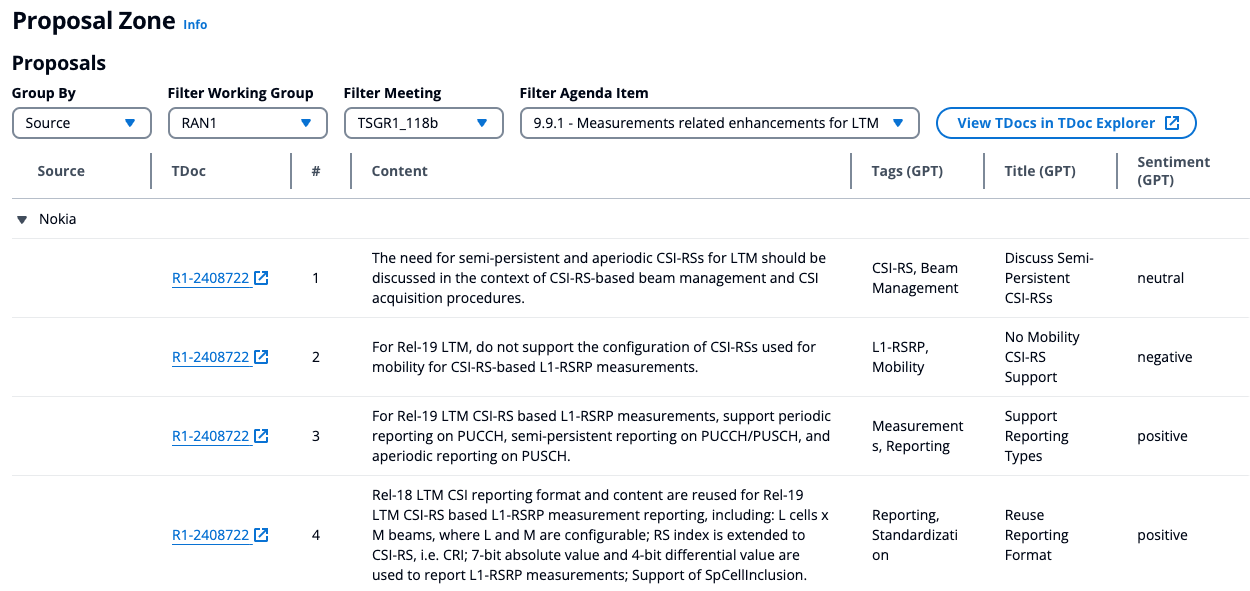
Using Proposal Zone, delegates can streamline their preparation process, ensuring they have the information they need at their fingertips to engage in productive discussions and set meaningful standards.
Explore how Proposal Zone can help you manage your workload more effectively and contribute confidently to RAN1#118-bis. Visit https://ixi.wispro.com for more information.
Conclusion
As we approach this crucial meeting, leveraging these insights and tools can significantly influence how 3GPP RAN1 delegates and feature leads set the standards for the future of LTM enhancements.
The original article is from https://www.linkedin.com/pulse/understanding-focus-measurements-related-enhancements-lin--apjoc/?trackingId=Z4nrG4BV2Yx8a68RLhr8XQ%3D%3D.
